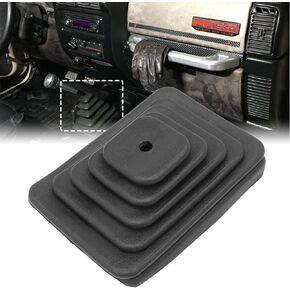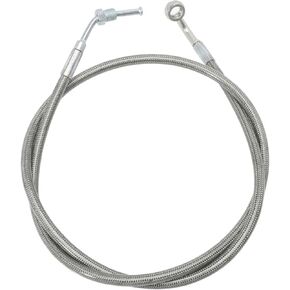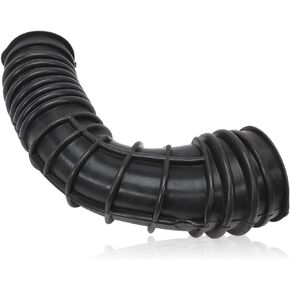- Shopping, made easy.
- /
- Get the app!
【When should I replace it?】
Problems with the generator "stuttering" and not firing properly. An intermittent or continuous shuddering of the engine with an abnormal "clunking" sound indicates a possible problem with one of the spark plugs. If the color of the spark plug is stained oil, it indicates that the spark plug gap is out of adjustment or too much oil supply, and the high pressure wire is short-circuited or disconnected. If it is smoky black, indicating that the spark plug hot and cold type selection error or thick mixture, oil upward. If the spark plug is seriously eroded, the top of the scar, black lines, rupture, electrode melting and other phenomena, which indicates that the spark plug has been damaged, must be replaced immediately.
Advantages of Iridium Spark Plugs: 1. High-performance ignition: enhanced ignition energy, precise ignition timing; 2. Long life: wear resistance, corrosion resistance; 3. Fuel economy: improved combustion efficiency, reduced emissions.
Part OE Number:
990174, DF8H11B
Pakage includes:
Pack of 6 Iridium Platinum Spark Plugs
Fitment:
Compatible with EX37 2013 3.7L
Compatible with FX37 2013 3.7L
Compatible with G37 2008-2013 3.7L
Compatible with M37 2011-2013 3.7L
Compatible with Q40 2015 3.7L
Compatible with Q50 2014-2015 3.7L
Compatible with Q60 2014-2015 3.7L
Compatible with Q70 2014-2019 3.7L
Compatible with QX50 2014-2017 3.7L
Compatible with QX70 2014-2017 3.7L
Compatible with Q70L 2015-2019 3.7L
Compatible with Nissan 2009-2020 3.7L
The Following Are The Specific Steps For Replacing Spark Plugs:
1. Preparation:
Make sure the vehicle engine has completely cooled down. It is generally safer to wait for a few hours after parking to prevent burns.
Prepare a suitable spark plug socket wrench. Generally, cars use a 16mm hexagonal socket, but some models may be different.
You may also need to prepare some other tools, such as a long extension rod, a ratchet wrench, a magnetic rod, a rag, etc.
2. Open the engine hood and find the spark plug location:
Open the vehicle's engine hood, find the decorative cover above the engine and remove it. You can usually see the ignition coil or high-voltage wire, and the spark plug is just below it.
3. Remove the ignition coil or high-voltage wire:
If it is an ignition coil, first unplug the plug on the ignition coil, then unscrew the screws that fix the ignition coil (you may need to use a suitable screwdriver or wrench), pull out the ignition coils one by one and put them aside, being careful not to pull or damage the wiring harness.
If it is a high-voltage wire, carefully pull out the high-voltage wire head directly by hand. Note that each high-voltage wire corresponds to a spark plug, and mark it to avoid confusion.
4. Remove the old spark plug:
Use a spark plug socket wrench to cover the spark plug and rotate it counterclockwise to loosen the old spark plug.
After loosening the spark plug, use a thin hose to blow away the dirt around the spark plug one by one to prevent the dirt from falling into the combustion chamber after the spark plug is unscrewed.
After loosening, use a magnetic rod or other tools to remove the spark plug (if there is no magnetic rod, you can also reinsert the ignition coil into the loosened spark plug, and then remove the spark plug together with the ignition coil).
5. Check the condition of the spark plug (optional):
Observe the electrode wear, carbon deposits, and whether the insulator is damaged. If the electrode is severely worn, there is too much carbon deposits, or the insulator is damaged, it is clear that it needs to be replaced. At the same time, you can also compare the new spark plug to understand what its normal state should be.
6. Install new spark plugs:
Carefully place the new spark plug into the spark plug hole, and gently screw it in a few turns by hand to ensure that the threads are aligned and there are no misaligned teeth.
Then use the spark plug socket wrench to tighten the spark plug according to the specified torque, and be careful not to tighten it too tight or too loose. Overtightening may cause the spark plug to break or damage the cylinder head, and too looseness may cause the spark plug to leak and cause poor ignition. Generally speaking, the tightening torque of the spark plug is about 20-30N·m, but the specific value should be based on the vehicle's maintenance manual.
7. Install the ignition coil or high-voltage wire:
If the ignition coil was removed before, insert the ignition coil correctly into the corresponding position, tighten the fixing screws, and plug in the wiring harness plug.
If it is a high-voltage wire, according to the previously made marks, correctly insert the high-voltage wire head into the corresponding spark plug.
8. Inspection and cleaning:
Check whether all installation steps are correct, ensure that the spark plug is firmly installed, and the ignition coil or high-voltage wire is connected normally.
Clean the debris and tools in the engine compartment and close the engine hood.
The steps for replacing spark plugs may vary slightly for different models. If you encounter difficulties or uncertainty during the replacement process, it is recommended to refer to the vehicle's maintenance manual or consult a professional car repairman. In addition, when replacing spark plugs, choose high-quality spark plugs that match the vehicle model, which will also help ensure the performance and normal operation of the engine.

 Digital Thermatic Switch 12V-24V, Adjustable Digital Radiator Fans Controller Kit#0444
KWD 21
Digital Thermatic Switch 12V-24V, Adjustable Digital Radiator Fans Controller Kit#0444
KWD 21
 AUROLYNNE Shifter Boot & Retainer Bezel Kit Fits for TJ Wrangler 1997 1998 1999 2000 2001 2002 2003 2004 Replaces 53000056 52078558
KWD 9
AUROLYNNE Shifter Boot & Retainer Bezel Kit Fits for TJ Wrangler 1997 1998 1999 2000 2001 2002 2003 2004 Replaces 53000056 52078558
KWD 9
 -12%
40" Rear Brake Hose Line Fits for Polaris 2003-2005 Sportsman 400 2006-2007 Sportsman 450 2003-2010 Sportsman 500
KWD 11.500
-12%
40" Rear Brake Hose Line Fits for Polaris 2003-2005 Sportsman 400 2006-2007 Sportsman 450 2003-2010 Sportsman 500
KWD 11.500
 Air Receiver Intake Tube Filter Hose Fit for Regal 2009-2013 and Malibu 2010-2014 22951182
KWD 15
Air Receiver Intake Tube Filter Hose Fit for Regal 2009-2013 and Malibu 2010-2014 22951182
KWD 15